VisionX 420D Review: ASRock's mini-PC Lineup Continues to Impress
by Ganesh T S on September 1, 2014 9:00 AM ESTGaming Benchmarks
The two recent mini-PCs that we reviewed with gaming potential have both been based on Intel's Iris Pro. The Gigabyte BRIX Pro has a much smaller footprint, while the Zotac ZBOX EI750 and the VisionX 420D are more comparable. When the VisionX 420D was officially launched, AMD's official model number for the Venus GPU targeting the mobile market was the Radeon HD 8850. In their rebranding exercise, it became the R9 270MX. The MXM card also integrates 1 GB of GDDR5 VRAM. For the purpose of benchmarking, we chose five different games (Company of Heroes 2, Sleeping Dogs, Tomb Raider, Bioshock Infinite and DiRT Showdown) at three different quality levels.
As someone focusing on HTPCs and multimedia aspects, I rarely get to process gaming benchmarks, even while evaluating GPUs. One of the aspects that I feared was spending lot of time in installing the same games again and again on different PCs under the review scanner. The solution was to go the Steam route. Unfortunately, Steam also likes to keep the game files updated. A quick online search revealed that Steam could make use of an external drive for storing the game executables and downloadable content. With the Steam drive on-the-go use-case being read-heavy, the Corsair Flash Voyager GS USB 3.0 128GB Flash Drive (with read speeds of up to 275 MBps) was ideal for use as a portable Steam drive.
Even before we jump into the benchmark numbers, readers must be thinking about the VisionX 420D handily besting the Intel Iris Pro-based PCs. AMD doesn't disappoint, as shown in the graphs below. For comparison purposes, we also have results from the ASRock Vision 3D 252B, a two-generation old gaming mini-PC that used the NVIDIA GT 540M.
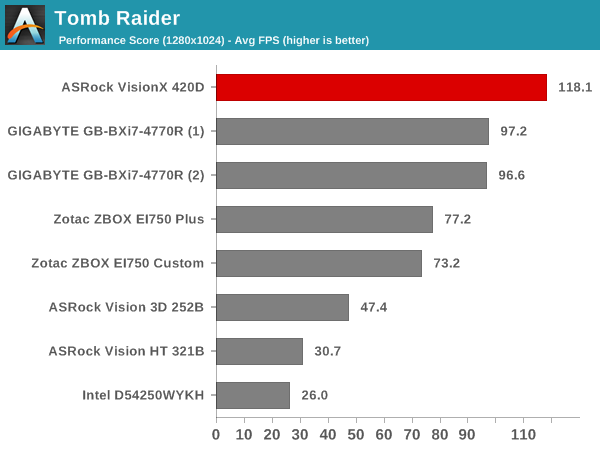
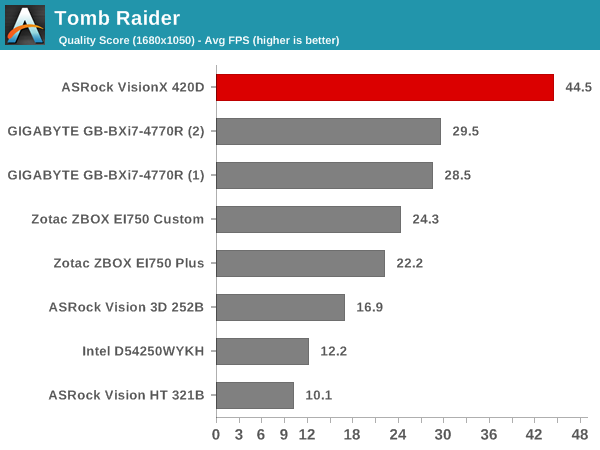
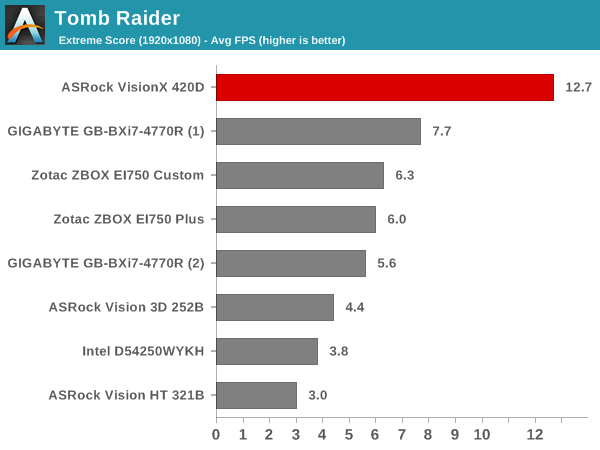
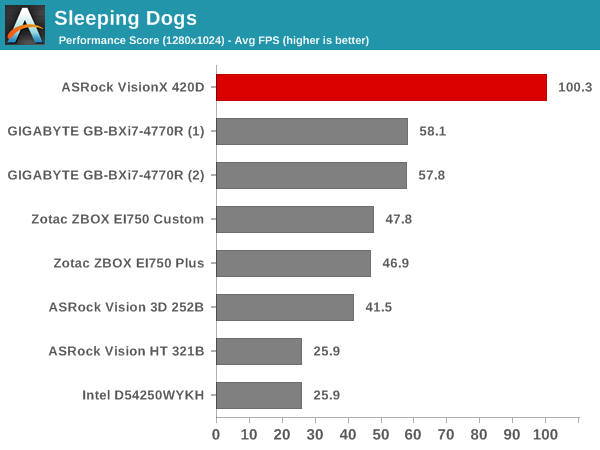
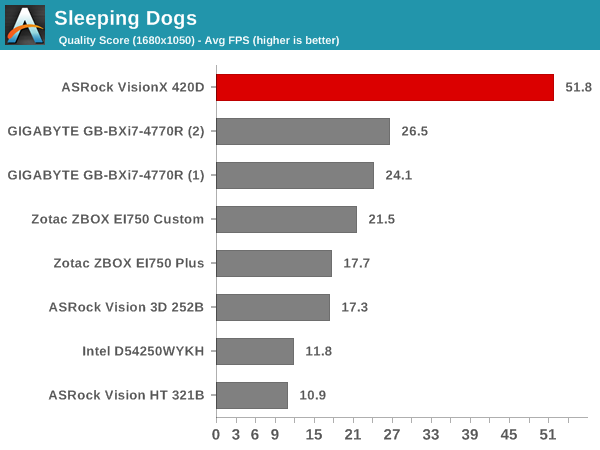

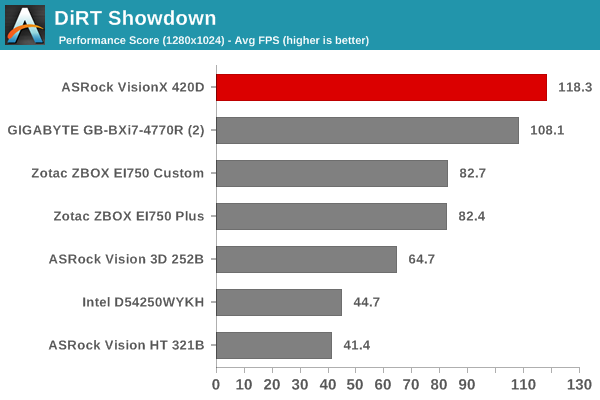
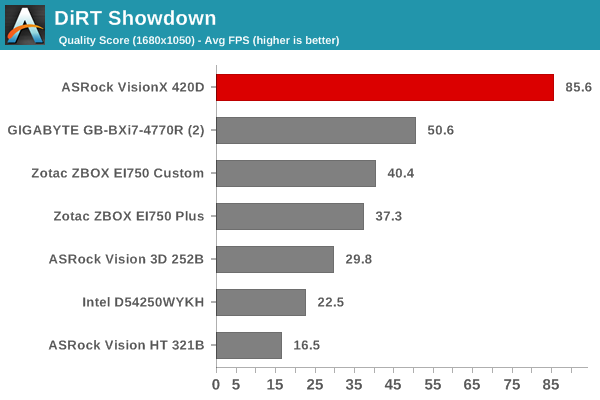
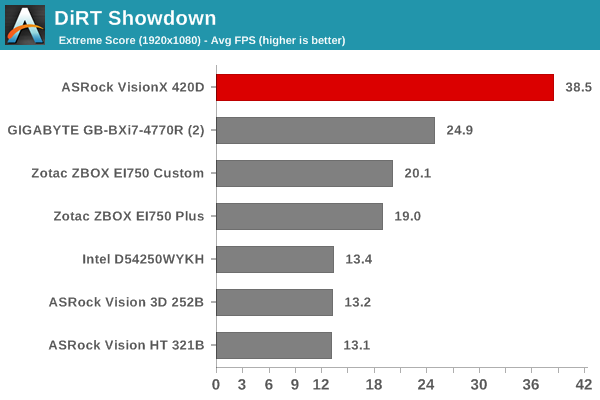
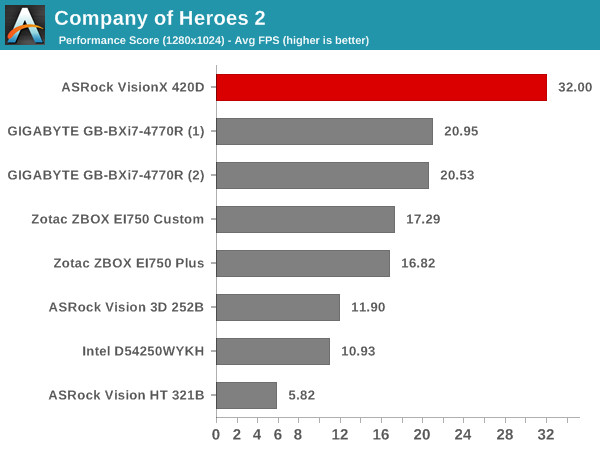
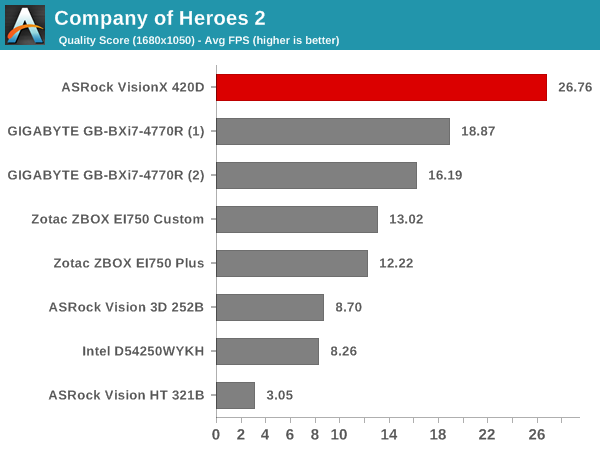
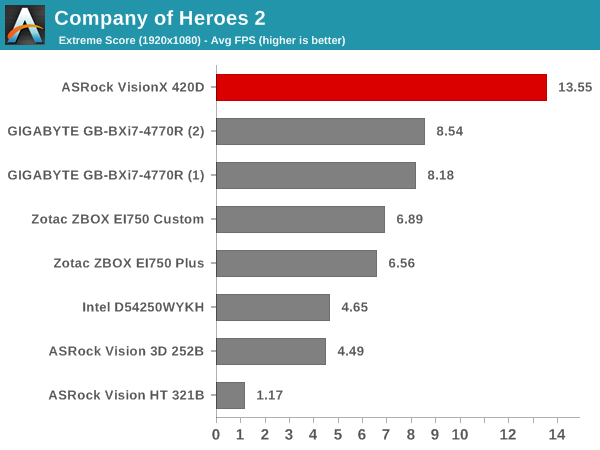
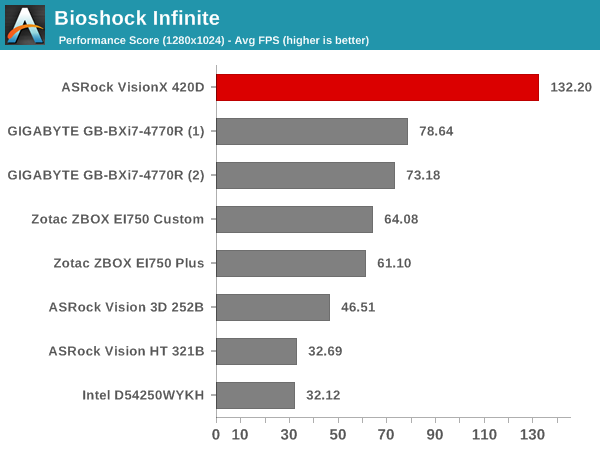
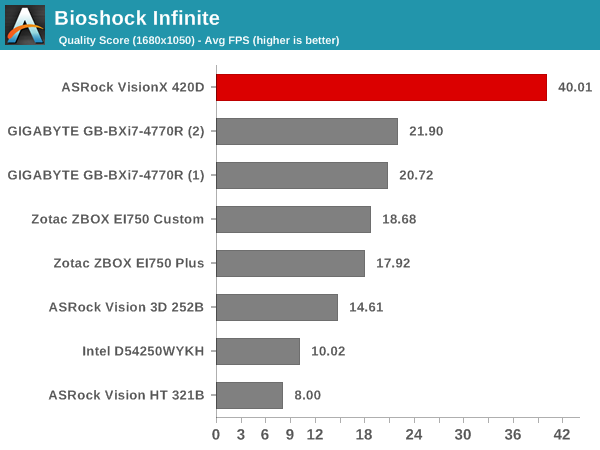
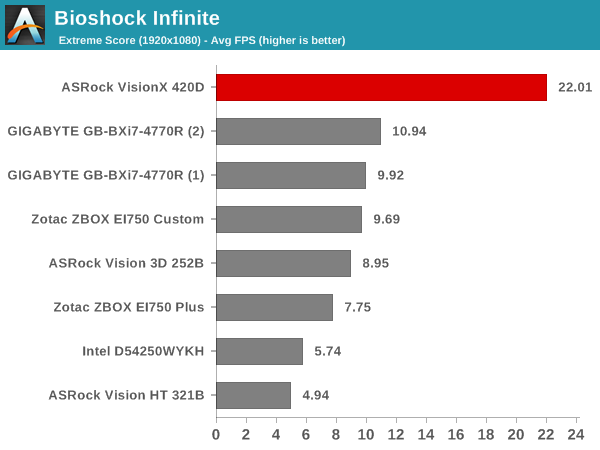
Before concluding this section, I would like to draw attention to the improvement in gaming credentials over the last two years inside the same chassis with a similar thermal headroom. This has really expanded the available target market for gaming mini-PCs such as the one being considered today. Gigabyte does have the BRIX Gaming version (which comes in a smaller chassis with a 'desktop-class' NVIDIA 'GTX 760'). We will see next week whether it can give the ASRock VisionX 420D a run for its money in the gaming department.










30 Comments
View All Comments
mschira - Monday, September 1, 2014 - link
Nice article, and interesting machine. I think the hardware documentation and pictures could be a bit better (disassembly), but otherwise a decent work.The lack of blue ray and 4K decoding are the obvious shortcomings, though mostly when one has a 4K TV - which I guess not many do.
boxof - Monday, September 1, 2014 - link
Any chance we can start getting sound recordings as part of SFF reviews? It'd be useful to get a sense of the nature of the sound (e.g. whiny) under load. Perhaps post some audio up to soundcloud or youtube if bandwidth is a concern.albiglan - Monday, September 1, 2014 - link
I'm also surprised by the lack of Blu-Ray option, but am noticing this more and more on laptops as well (no ODD, but if there is, it seems DVD only). I'm wondering if it is just a cost thing or if the format is on the decline?ET - Tuesday, September 2, 2014 - link
Yes, my problem with this too. Looks like a great little gaming HTPC but I'd love a blu-ray and a 2TB HD option (I'll add an mSATA SSD myself). Really, my current HTPC is a little long in the tooth, but has the benefit of 3.5" HD and standard 5.25" Blu-Ray drive support.Gadgety - Tuesday, September 2, 2014 - link
"The VisionX 420D has a much better acoustic profile compared to the BRIX Pro and even the ZBOX EI750 (thanks to the larger chassis, which, in turn, allows for a better thermal solution). Subjectively speaking..."Nice article. There's detailed objective measurements for just about every metric conceivable.That said there's always room for improvement. I find acoustics and noise to be just about the only area left to subjective impressions. Why is that? For these small boxes cooling and noise is where it's at in terms of separating the winners from losers, and that area is left to subjective impressions. Please include measurements and graphs of acoustic noise levels and signatures.
dj_aris - Tuesday, September 2, 2014 - link
Systems of such footprint literally crave for Maxwell. Maxwell is out for like 7 months now, why isn't it alredy in the hands of OEMs? AW Alpha is great and all but it's not here yet. Even Gigabyte has a low profile 750Ti ready now, I bet Asrock could have managed to fit that easily inside and make a perfectly capable mid/high 1080p machine.milkod2001 - Tuesday, September 2, 2014 - link
I'm not sure if there's something to like about 420D except the size.Looking at specs(medium class mobile CPU & GPU) and price($860),420D is basically laptop with no keyboard and screen. When you add cost of HD screen and keyboard(min.$120) you could get laptop with i7 quad & Maxwell 880M or proper PC gaming machine.
420D is pretty much useless for gaming unless you are happy with 7-13fps on 1080p and overkill & overpriced as office PC/HTPC.
I'm very confused with reviewer quite positive conclusion. What I'm missing here?
ganeshts - Tuesday, September 2, 2014 - link
The market segments are different. $120 in savings is still $120 when the use-case involves a notebook being docked to a display almost all the time.On the other hand, there is a reason why SFF PCs are becoming more and more popular compared to full-blown PC gaming machines - people appreciate and are willing to pay the premium for it. If the BRIX Pro and ZBOX EI750 are good Steam machines, the 420D is definitely much better at that job.
TrackSmart - Wednesday, September 3, 2014 - link
I think the point the poster is making is that these are *laptop specs* in a small PC that is marketed to gamers -- which means pretty weak performance.Someone interested in gaming (the target audience) would be much better off getting a slightly larger chassis with a low-power desktop CPU and GPU. You'd still get a fairly small chassis and low power consumption, but with a HUGE boost in gaming performance. That makes a lot more sense to me, given the supposed target audience (gamers).
Shadowmaster625 - Thursday, September 4, 2014 - link
For $100 more you can get a Yoga Y50 with a maxwell based gtx 860m. I'm sure there are several notebooks with better specs that are cheaper. What is the purpose of this form factor given the price premium compared to both desktops AND notebooks????